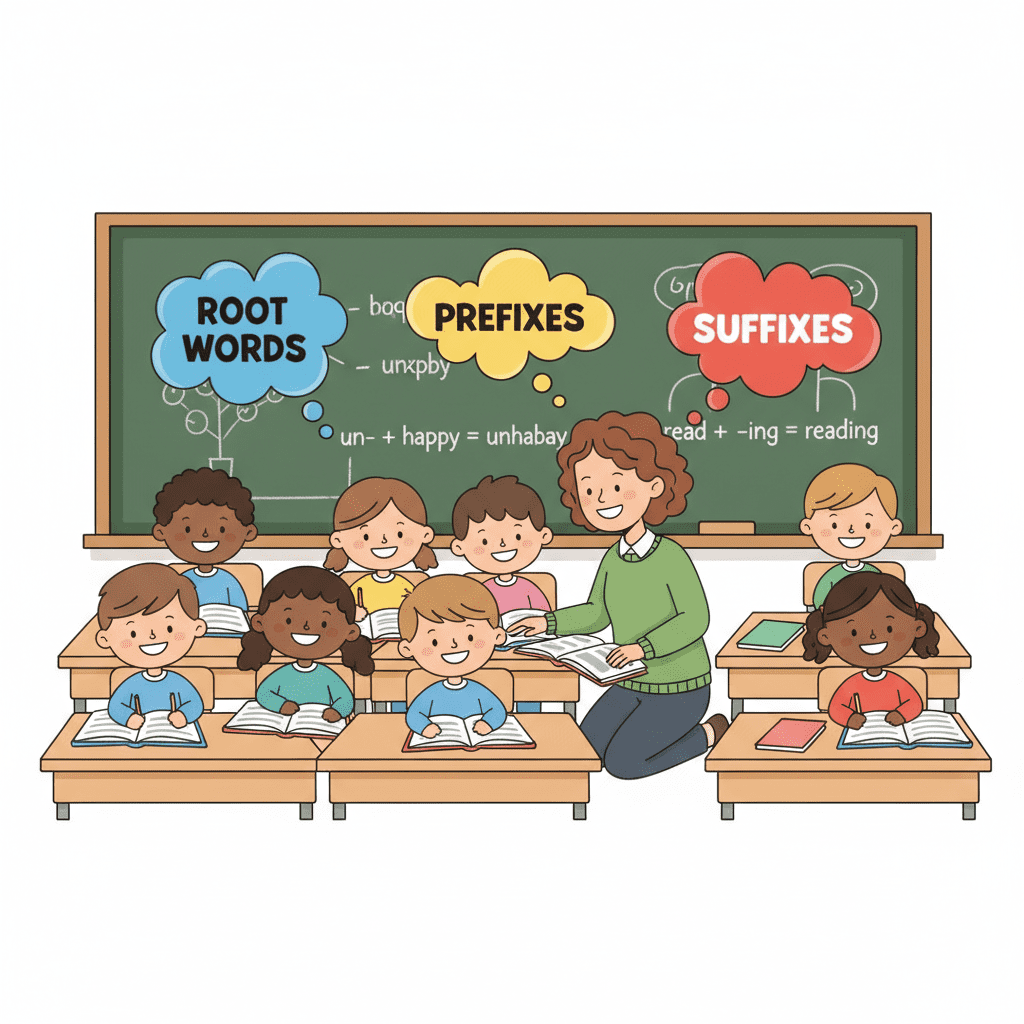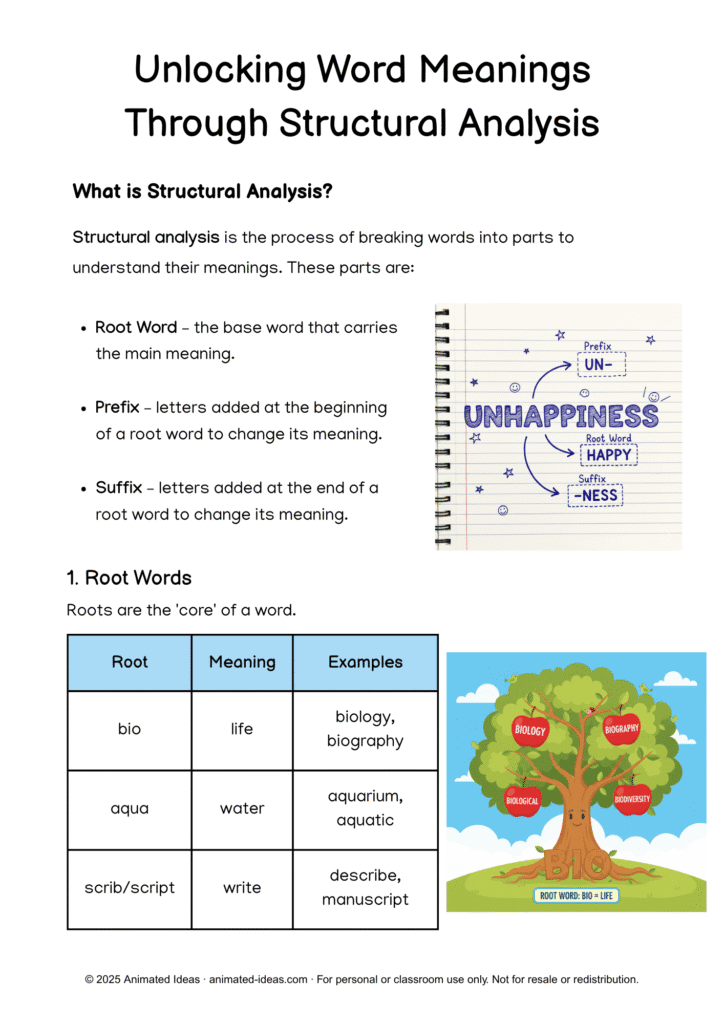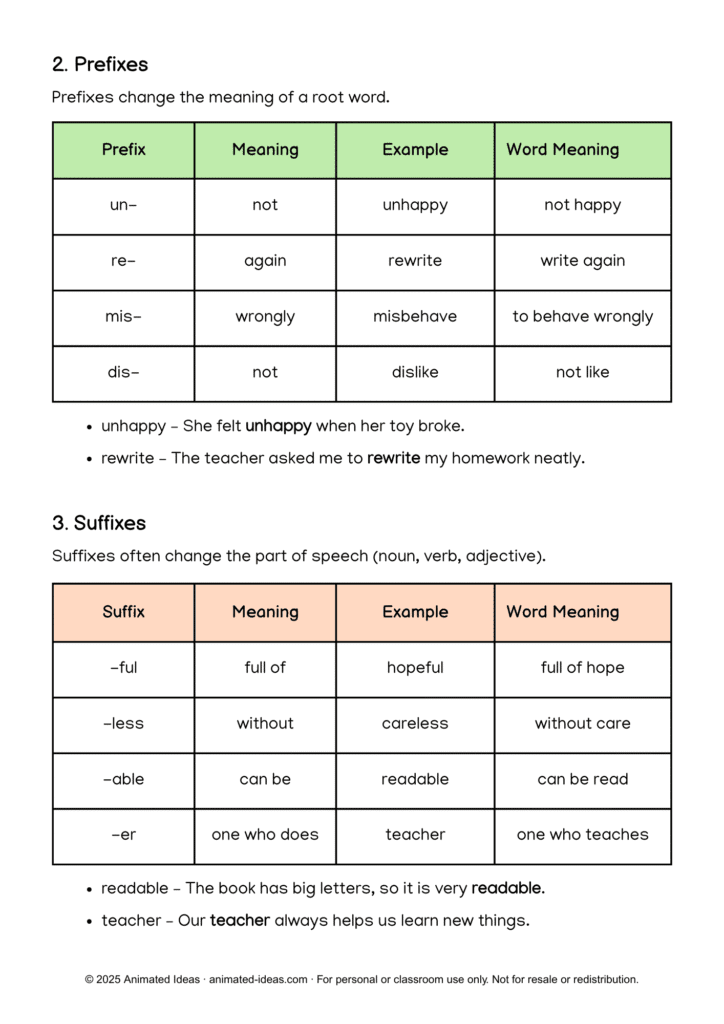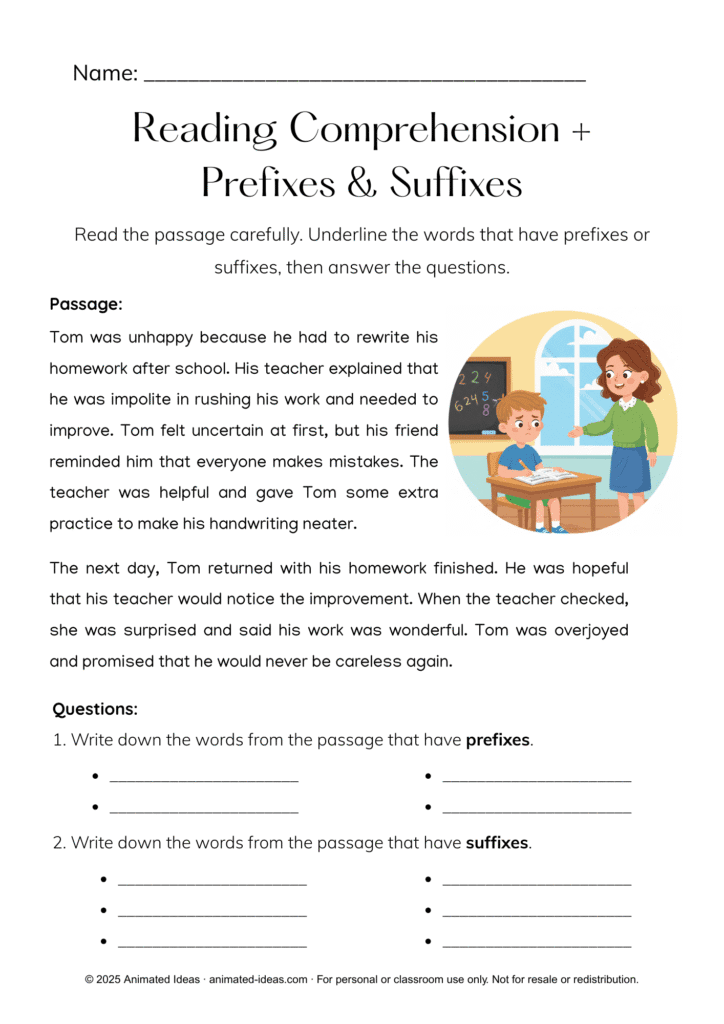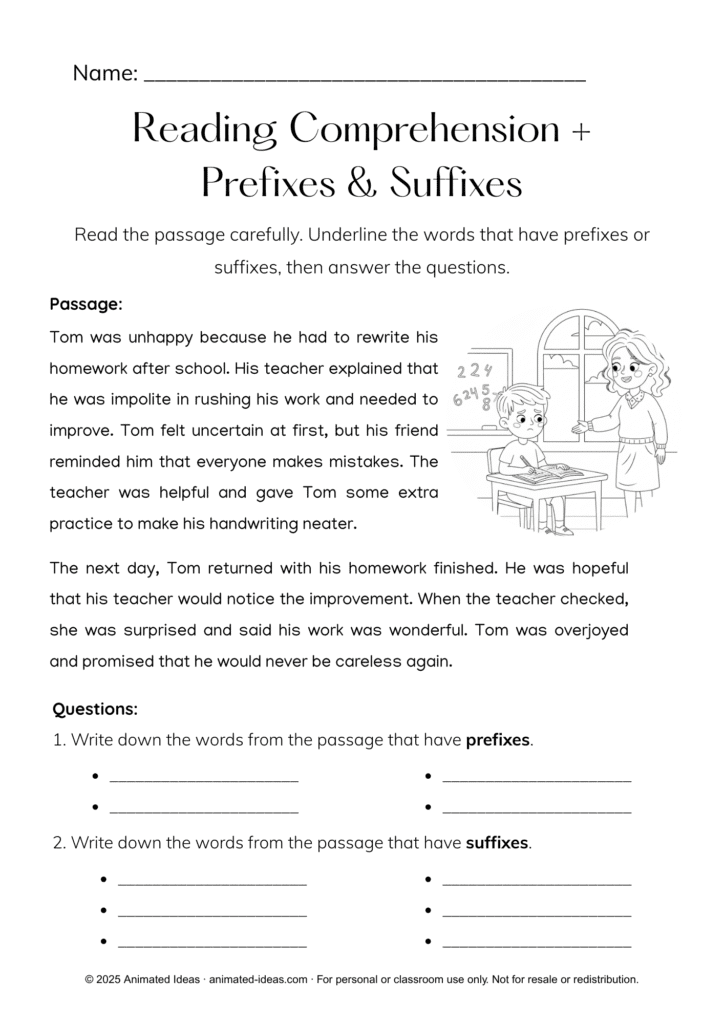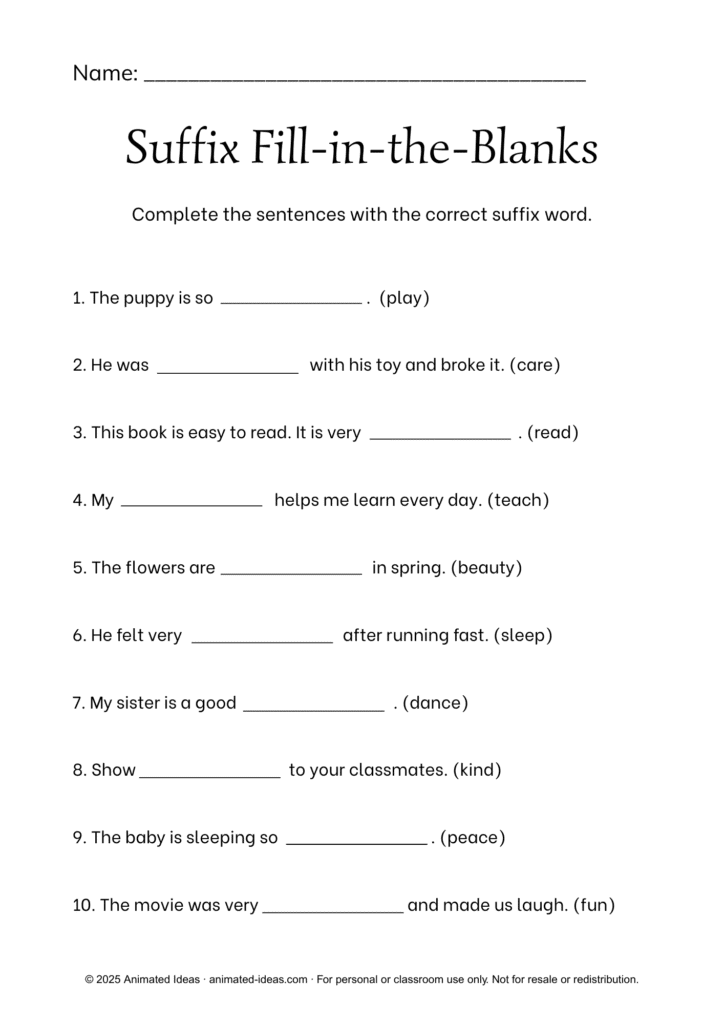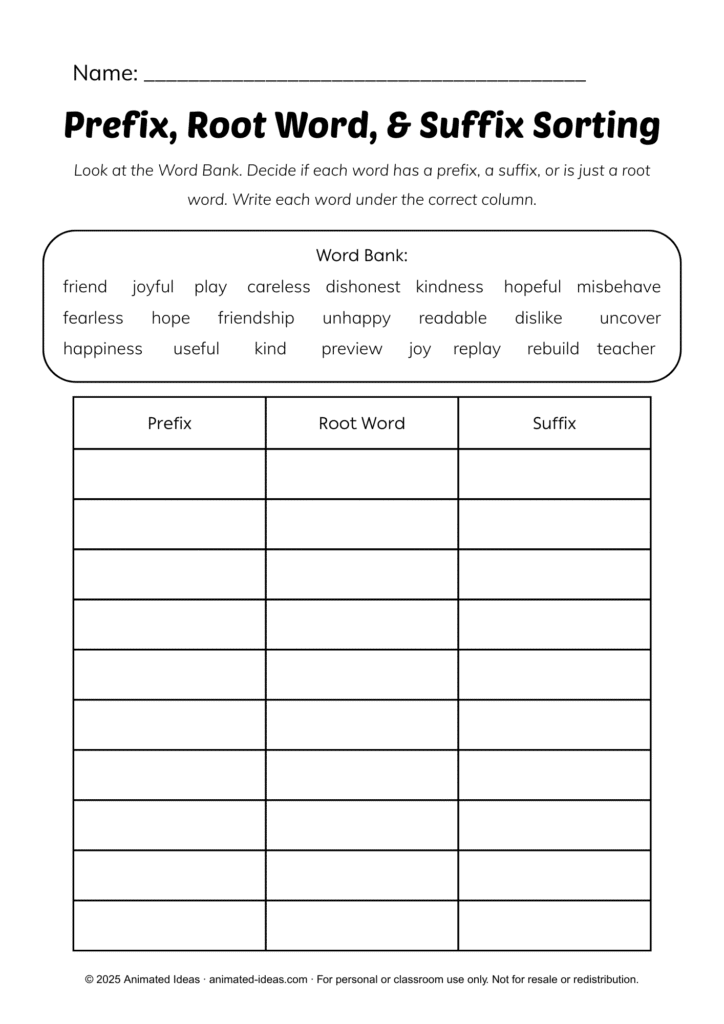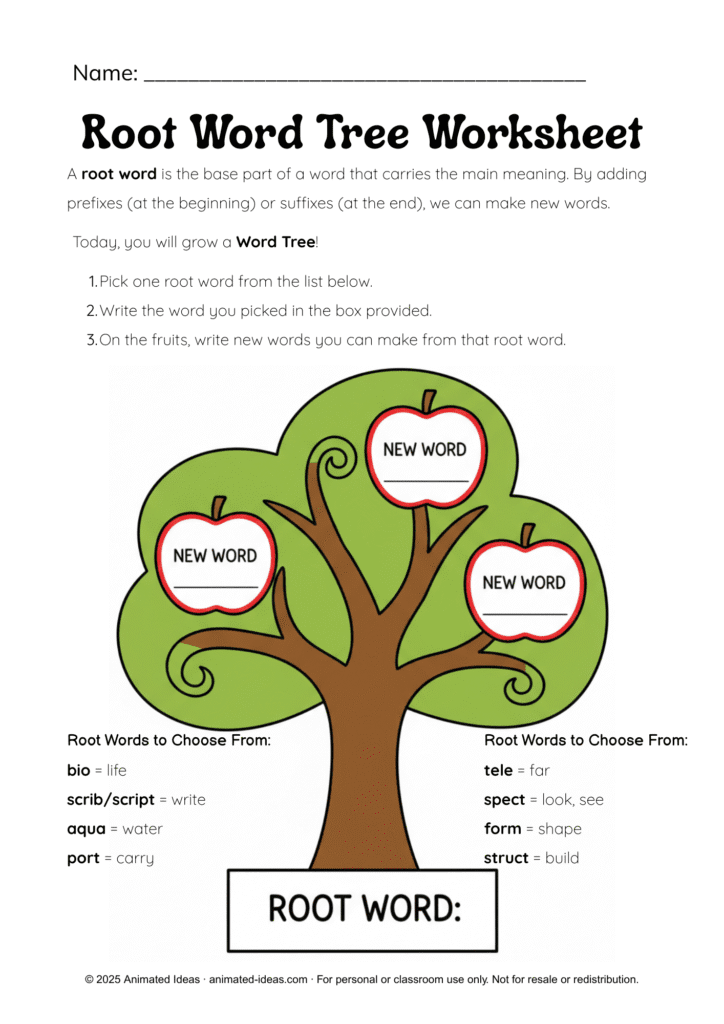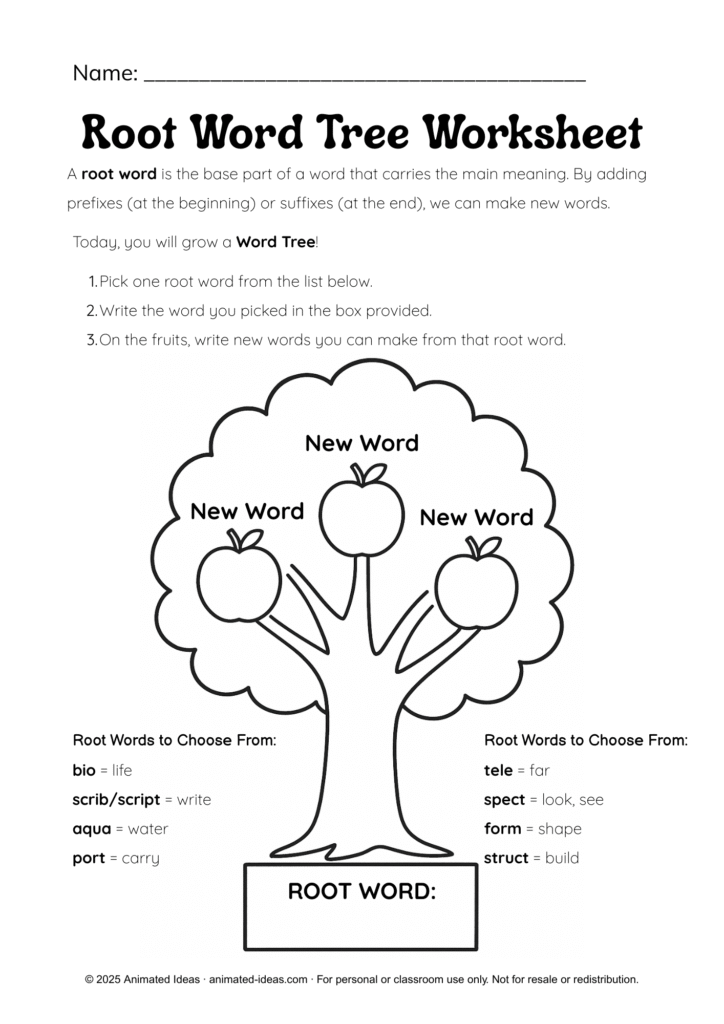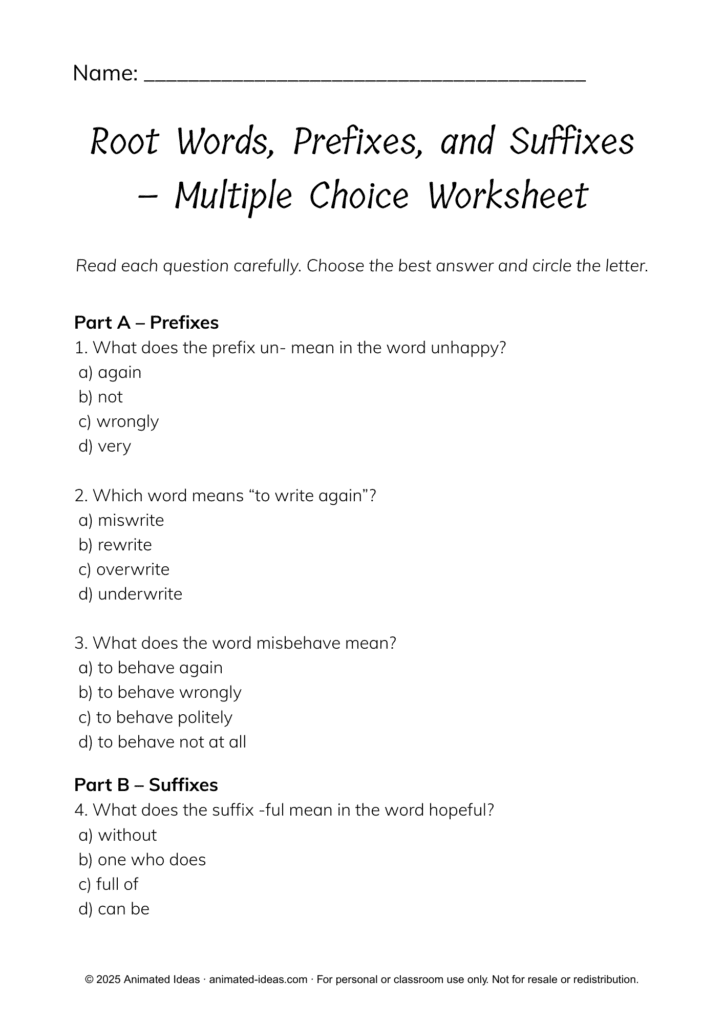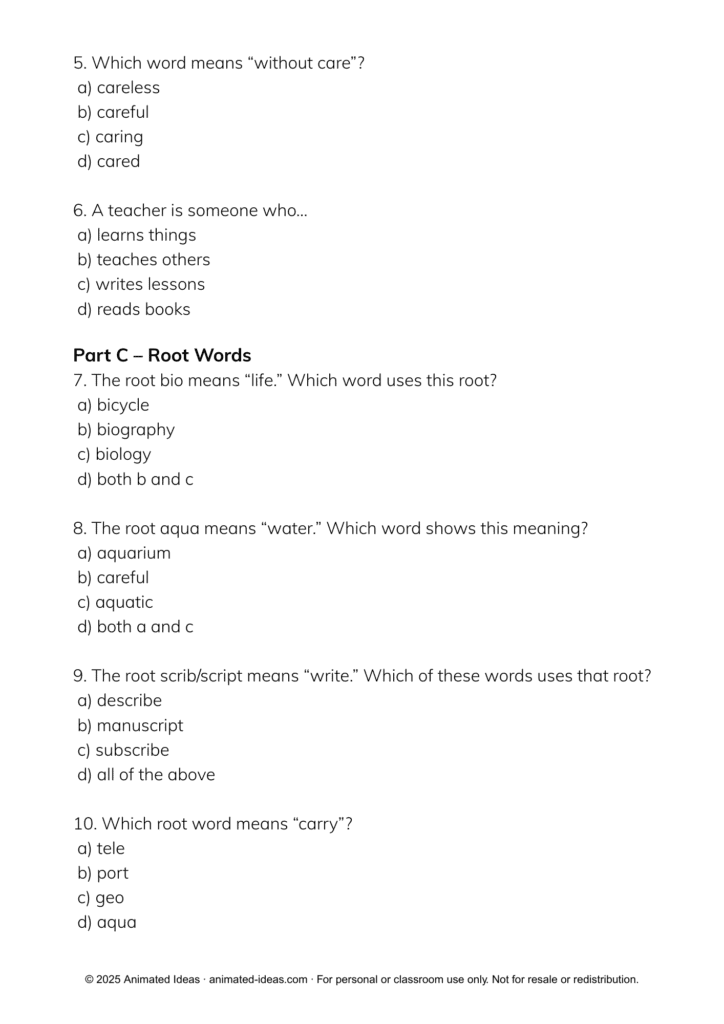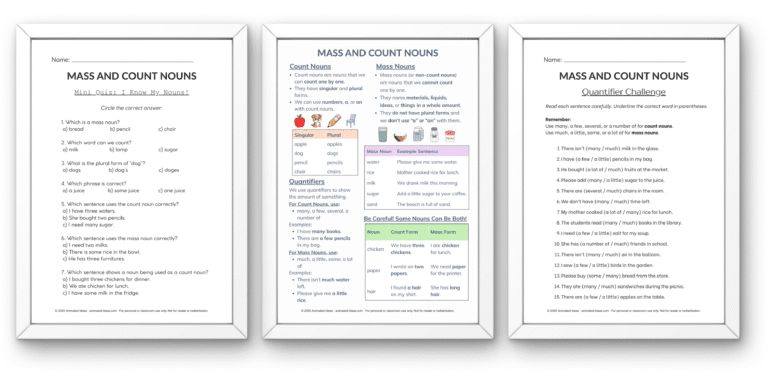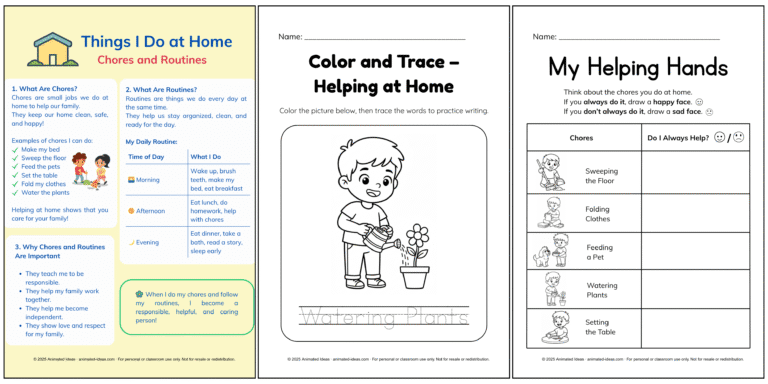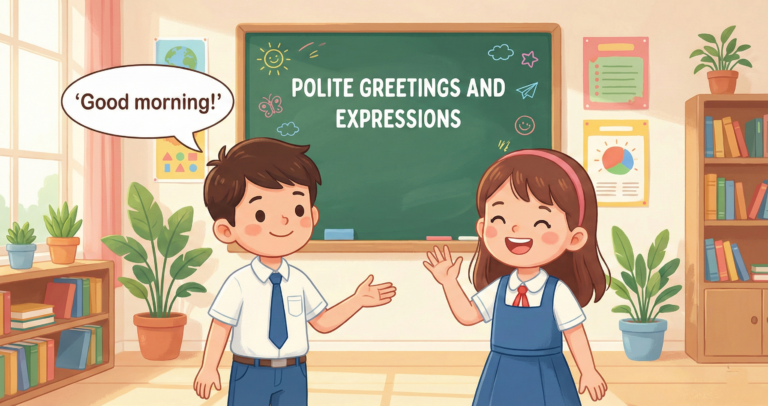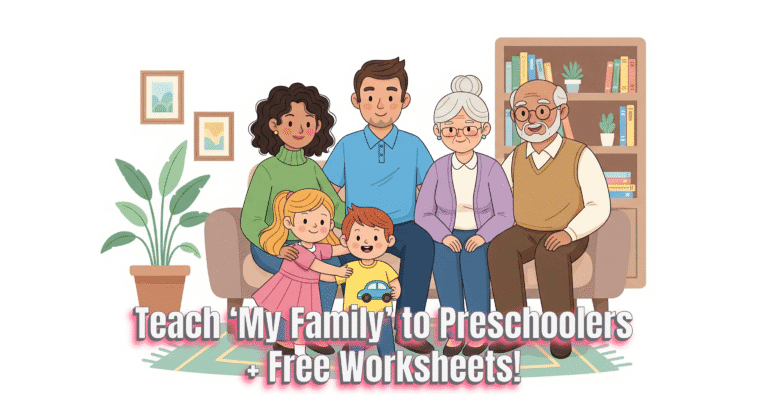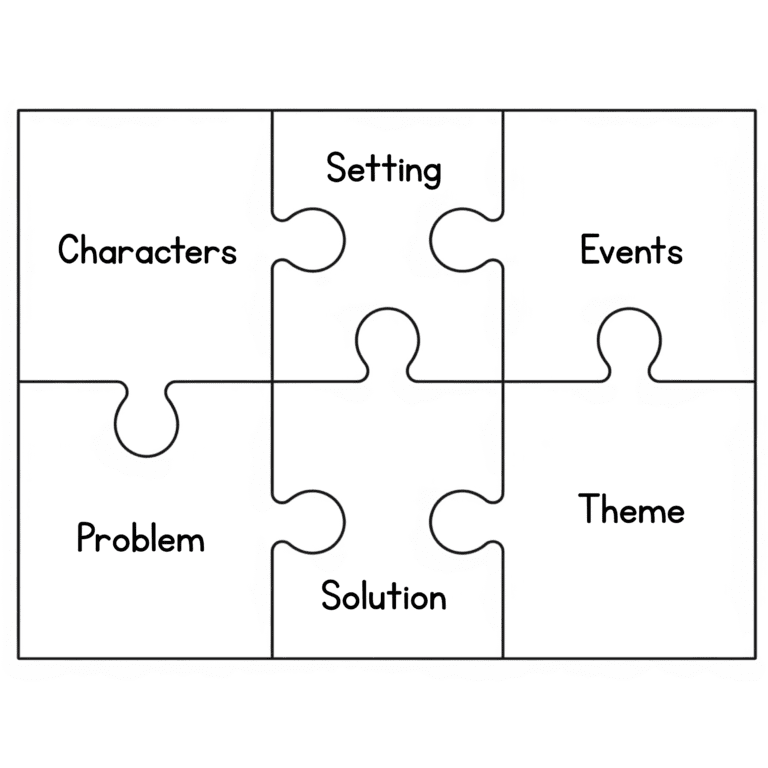Root Words, Prefixes, Suffixes – Structural Analysis
Introduction
Understanding the structure of words is an essential skill in learning English. Words are made up of different parts, such as root words, prefixes, and suffixes. By studying these parts, students can determine the meaning of unfamiliar words, expand their vocabulary, and improve reading comprehension. This process is called structural analysis.
Root Words
A root word is the main part of a word that carries the core meaning. Most words can be traced back to a root, which gives a clue to the word’s definition.
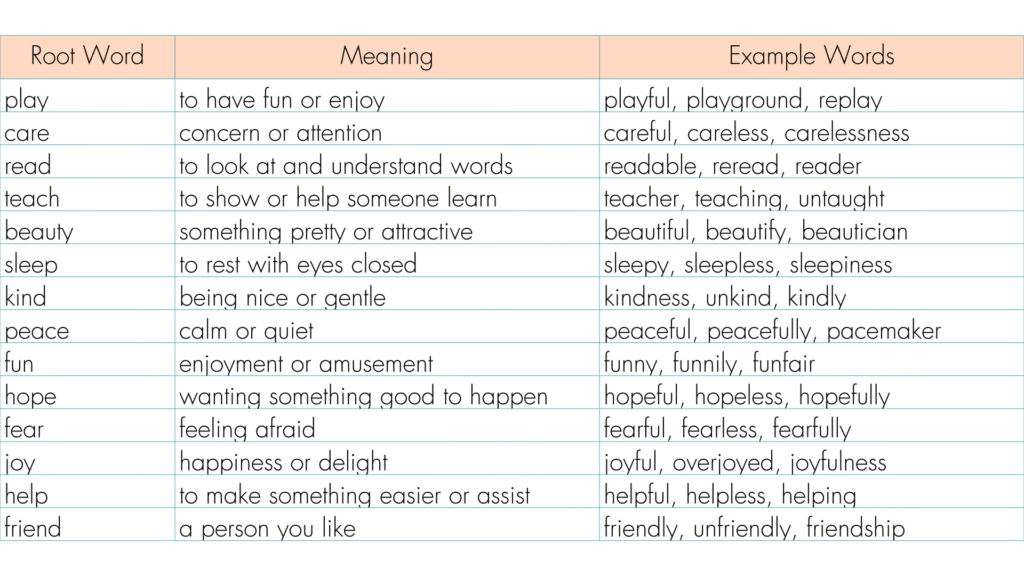

When you know the root word, you can often guess the meaning of new words that use the same root.
Prefixes
A prefix is a group of letters added to the beginning of a root word to change its meaning. Prefixes help students modify words to convey new meanings.
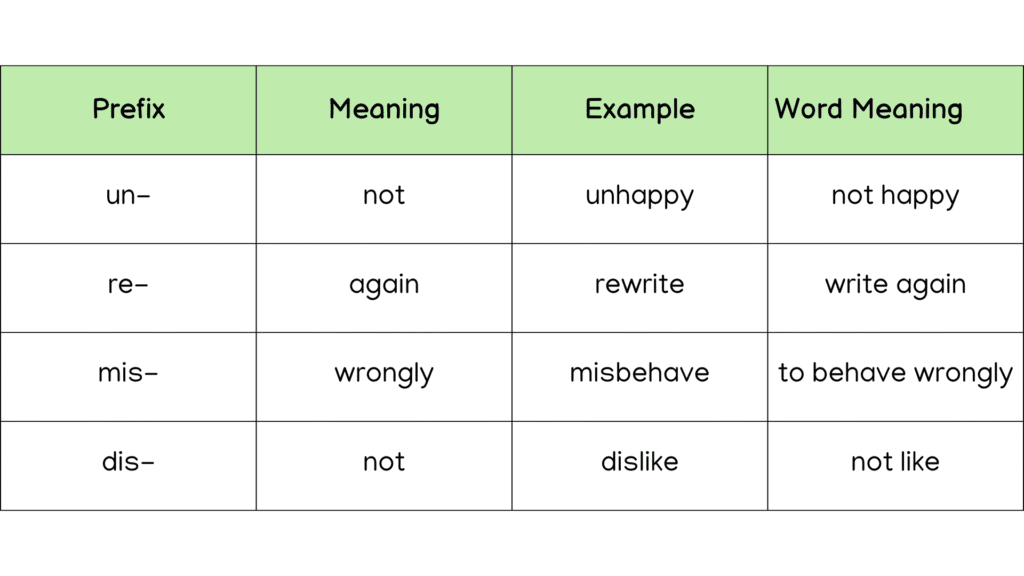
Example Sentences:
- Tom was unhappy because he lost his book.
- Please rewrite your answer neatly.
- The students will misbehave if they do not follow the rules.
- I dislike eating vegetables, but I know they are healthy.
Tip for students: Look at the beginning of a word to see if a prefix is changing the meaning of the root word.
Suffixes
A suffix is a group of letters added to the end of a root word. Suffixes can change the word’s meaning or its part of speech (noun, adjective, verb, etc.).
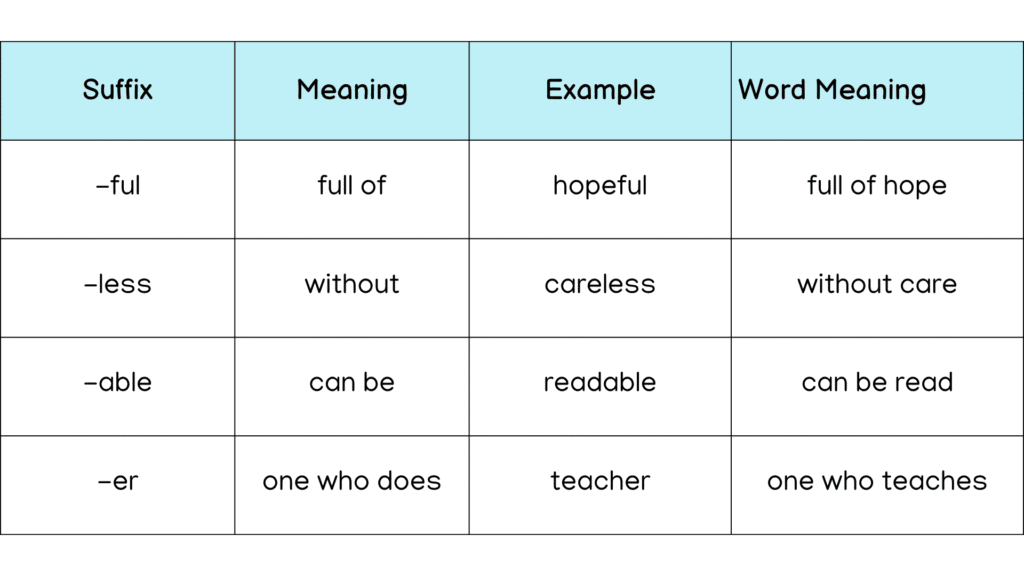
Example Sentences:
- She was hopeful about winning the game.
- He was careless and dropped his pencil on the floor.
- This book is very readable because the letters are big and clear.
- My teacher helps me learn new words every day.
Tip for students: Look at the end of a word to see if a suffix changes its meaning or its role in a sentence.
Structural Analysis
Structural analysis is the process of breaking words into their parts—prefix, root, and suffix—to understand their meaning. This skill helps students:
- Decode unfamiliar words in reading.
- Expand vocabulary.
- Improve spelling and writing.
Steps for Structural Analysis:
- Identify the prefix (if any) at the beginning of the word.
- Find the root word.
- Look for a suffix at the end of the word.
- Combine the meanings of each part to understand the full word.
Steps for Structural Analysis:
- Identify the prefix (if any) at the beginning of the word.
- Find the root word.
- Look for a suffix at the end of the word.
- Combine the meanings of each part to understand the full word.
Example:
Word: unhappiness
- Prefix: un- = not
- Root word: happy = feeling glad or joyful
- Suffix: -ness = state of
Meaning: “The state of not being happy.”
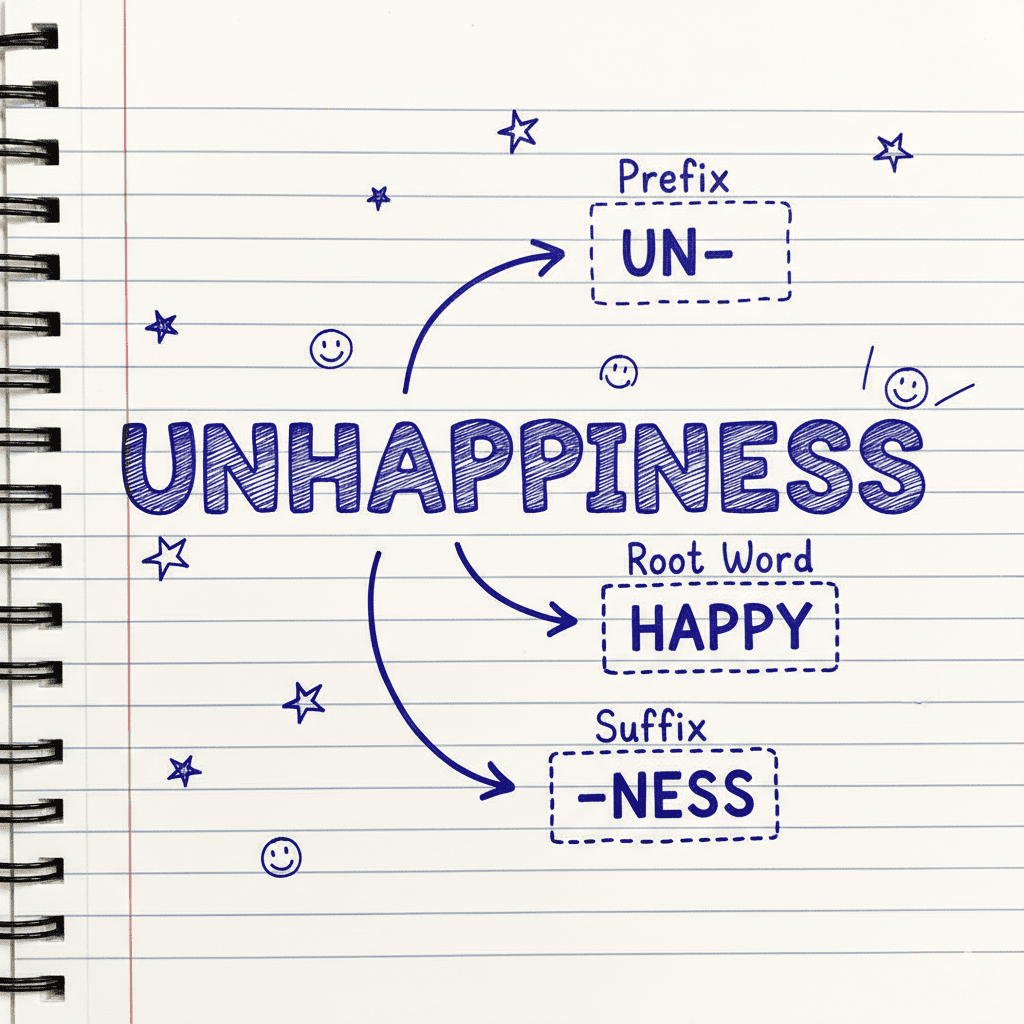
Practical Tip: Even if you don’t know the word, breaking it into smaller parts can help you guess the meaning.
Importance of Root Words, Prefixes, and Suffixes
- Helps students read and understand new words.
- Improves spelling and writing skills.
- Strengthens vocabulary for reading comprehension.
- Prepares students for more advanced English studies.
Conclusion
Learning root words, prefixes, suffixes, and structural analysis is a key step for Grade 4 English learners. By practicing these strategies, students can decode unfamiliar words, expand their vocabulary, and become more confident readers and writers.
For updates and free resources, follow us:
📺 YouTube: Animated Ideas
📘 Facebook Page: Animated Ideas
👩🏫 Facebook Group: Learning Resources for Kids

